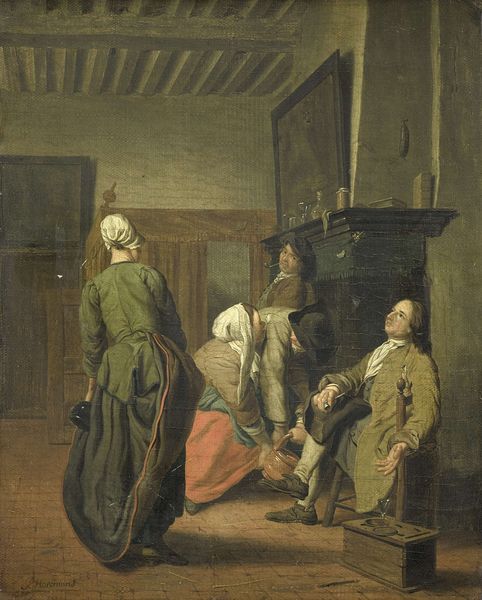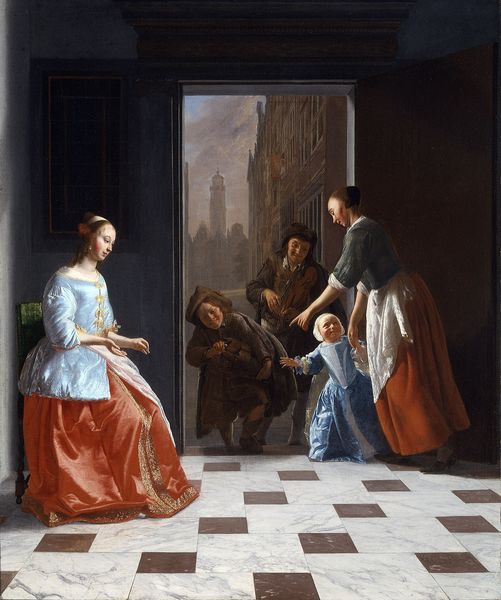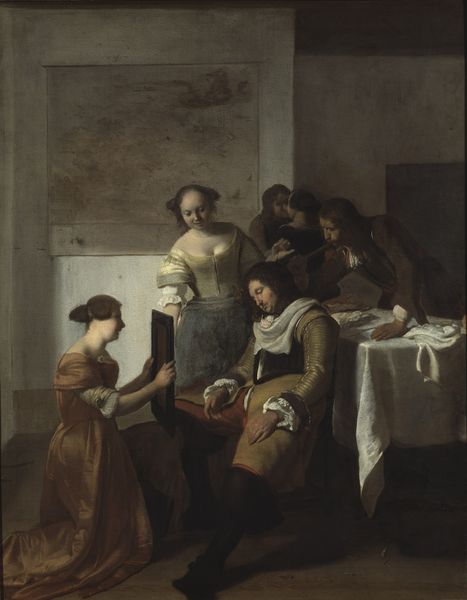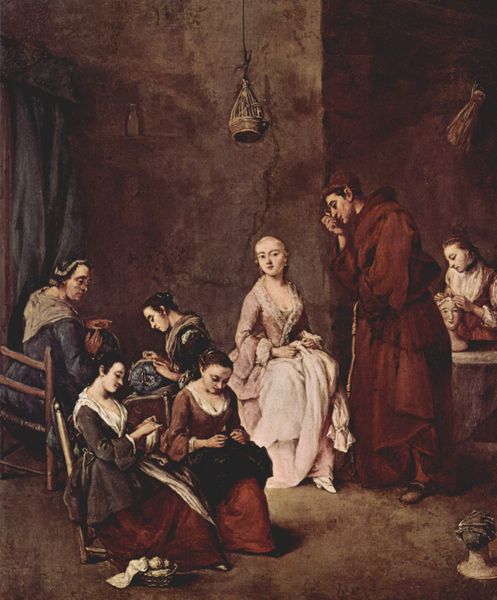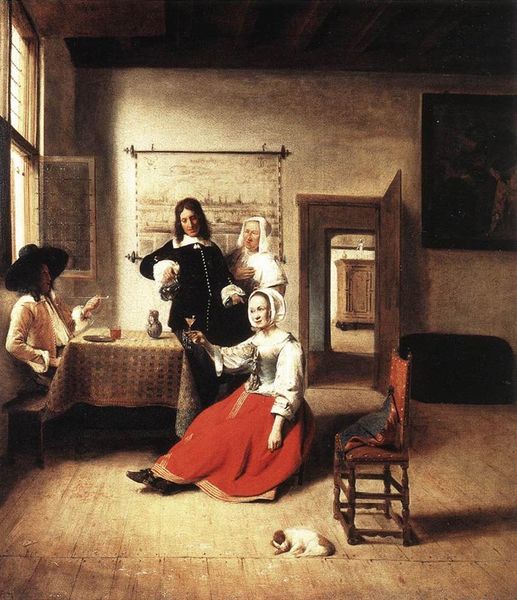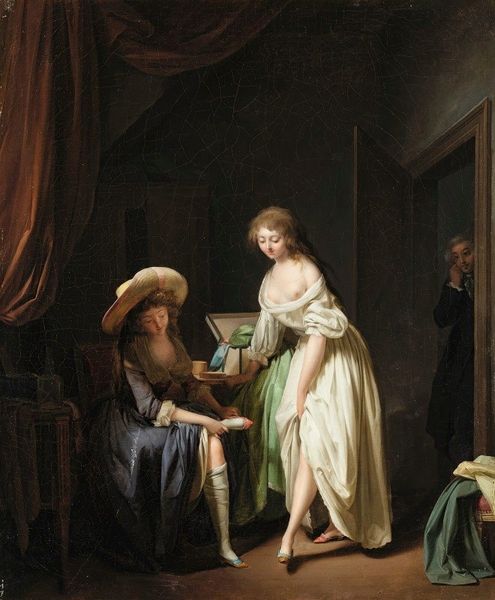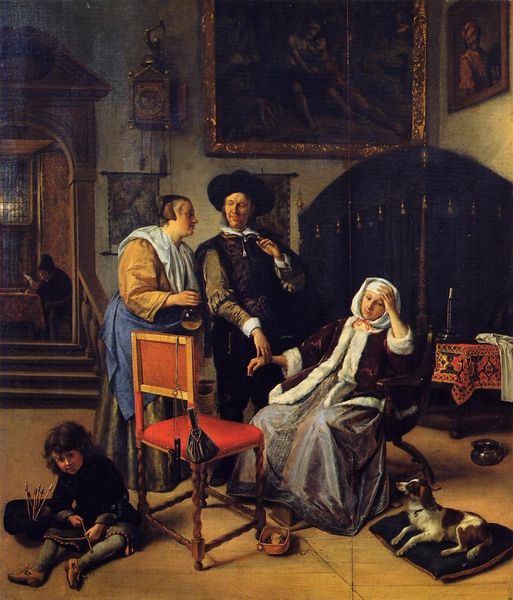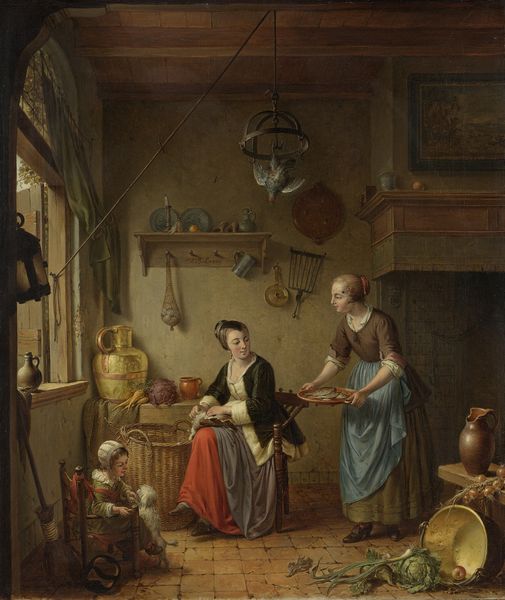
#
possibly oil pastel
#
oil painting
#
portrait head and shoulder
#
underpainting
#
painting painterly
#
animal drawing portrait
#
portrait drawing
#
portrait art
#
fine art portrait
#
digital portrait
Copyright: Public domain
Editor: This is "Buying Grapes" painted in 1669 by Jacob Ochtervelt. It's currently housed in the Hermitage Museum. I find myself really drawn to the contrast in clothing between the woman selling the grapes and the family. What do you make of this contrast? Curator: It's essential to consider the production process here. The grapes themselves are a commodity, a result of agricultural labor. Notice the vendor’s simpler clothing and the basket – tools of her trade. Editor: Right, it highlights a system of labor and class! Curator: Precisely. Ochtervelt is subtly revealing the economic underpinnings of Dutch society. The buying of grapes isn't just a simple transaction; it’s a display of wealth acquired through commerce, trade, and probably exploitation of resources. What’s your read on the family depicted? Editor: Their refined clothing implies wealth, for sure. The detail in their dresses, it probably cost a lot for material, tailoring. So is the act of buying grapes also about them flaunting it? Curator: Exactly! Consumption becomes a performance. But also, how does the making and the art-making in general tie into labor? Editor: Good point! Someone made the paint, someone prepared the canvas... painting too, is work, isn't it? Curator: Absolutely. Ochtervelt, as a craftsman, is participating in the same system of labor, but creating something with arguably higher cultural status, it’s interesting! Editor: So the piece encourages us to consider all the people involved from grape growing to selling to creating art? That's a lot. Curator: Yes, from material acquisition to artistic representation to societal consumption, labor defines relationships between art, people, and commodities. It all points back to how we value work, doesn't it?
Comments
No comments
Be the first to comment and join the conversation on the ultimate creative platform.

